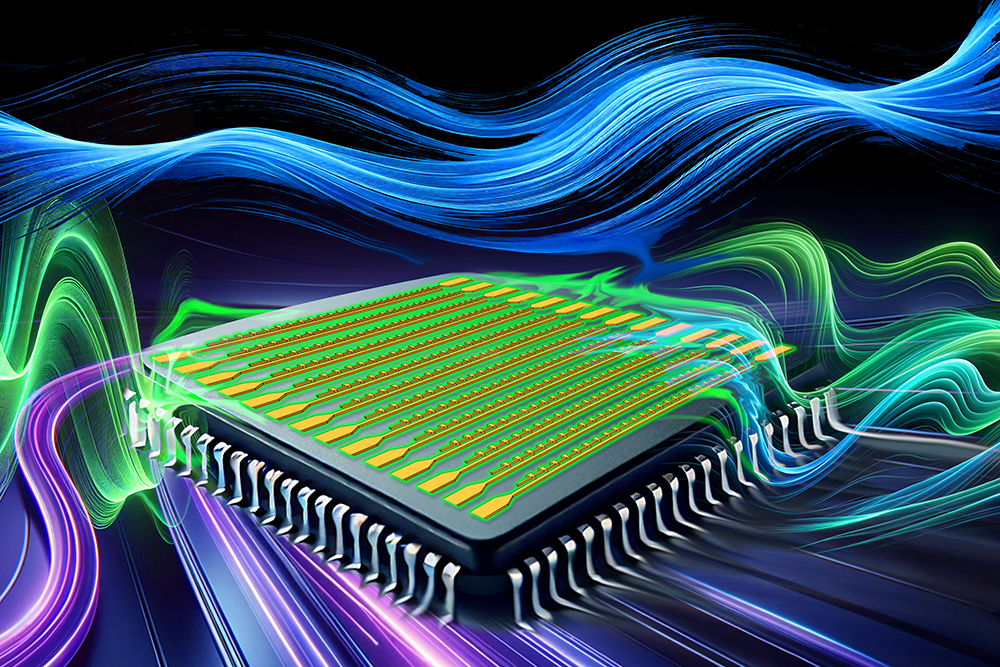Mathieu Le Provost, a postdoc in the Department of Aeronautics and Astronautics, passed away unexpectedly on July 30 while traveling in France.
Le Provost joined AeroAstro in 2023 and was a member of the Uncertainty Quantification Group, led by Professor Youssef Marzouk. Marzouk and Le Provost connected in 2020 when Le Provost reached out over email, eager to explore potential research collaborations. Although the Covid-19 pandemic prevented them from meeting in person, Marzouk, le Provost, and colleagues Ricardo Baptista PhD CSE ’22 and Le Provost’s University of California Los Angeles advisor Jeff Eldredge began working together remotely. “I admired and learned from Mathieu’s determination to take on new fields head on. When we came across an interesting idea, he quickly implemented computational methods and found novel ways to improve on the efficiency of existing approaches,” recalls Baptista.
Prior to coming to MIT, Le Provost earned his PhD in mechanical engineering from UCLA in 2022, his master’s in mechanical and aerospace engineering from the Illinois Institute of Technology in 2017, and his French engineering diploma (equivalent to an MS in mechanical and aeronautical engineering) from the Ecole nationale supérieure de Mécanique et d’Aérotechnique, also in 2017.
In June 2023, Le Provost officially joined the Uncertainty Quantification Group as a postdoc. “It feels like much longer ago, because Mathieu did so much in a short time. He was a pillar of our group, due to his openness, personal warmth, and generosity; his appetite for new research problems; and his deep thinking,” says Marzouk. “Mathieu was independent and self-propelled: every time we met, he’d share new ideas that were exciting and creative. And so many other students and postdocs wanted to work with him. He quickly built up a rich network of collaborators and a full plate of projects.”
A natural collaborator and a fierce friend
Le Provost’s contributions extended beyond his own research. He was a natural collaborator who brought people from different disciplines and departments together, making fast friends with the astrophysicists across the hall from his group. Matthew Levine, friend and postdoc at the Broad Institute of MIT and Harvard, notes the ways Le Provost brought people together. “In our subgroup reading group that I led, Matthieu was often ready to volunteer. And even when it wasn’t his turn, we could count him to be engaged and thoughtful. We all learned more thanks to him being himself,” says Levine.
Jan Glaubitz, another postdoc in the Uncertainty Quantification Group, remembers Le Provost’s deep connections with his loved ones. “He was always eager to stay connected with those he cared about. He celebrated his 29th birthday last August at The Mad Monkfish near campus. What struck me was the number of people who traveled across the country, from places as far as California, just to be with Mathieu on his special day. It was a testament to how deeply he was valued by those around him,” says Glaubitz.
A taste for adventure
Le Provost will be remembered as a passionate hiker with a love for the outdoors. “Mathieu was always joyful and ready for an adventure,” says Baptista. “At our last meeting in Marseille, we swam and dived together in the ocean for an entire afternoon. It was difficult for me to keep up with Mathieu’s infectious energy and willingness to continue swimming. I believe this is how Mathieu approached many problems. He dived deep, even into cold water, but came out stronger and brought along others for a joyous adventure.”
Alongside his academic achievements, Mathieu also had a creative side, which he expressed through pottery. “He often spoke passionately about his pottery classes, which offered him a different kind of fulfillment and relaxation. He was even successful enough to sell some of his pieces at a public market at MIT, which I know brought him a lot of pride.” recalls Glaubitz.
His enthusiasm for discovery was infectious, and his colleagues were inspired by his relentless pursuit of both knowledge and of a good meal. Olivier Zahm, a close colleague of Le Provost’s in the Uncertainty Quantification Group, recalls Le Provost’s “contagious taste for adventure, meeting people, and discovery — but also his taste for crèpes, Spritz, and chocolate mousse.”
Remembrances
A creative and dedicated researcher, Le Provost will be deeply missed by the countless friends across labs and departments that he made during his time at MIT. “Research is a passion-based profession that demands a lot from us, but which in return offers the opportunity to meet brilliant, extraordinary people, who very often become close friends,” says Zahm.
“I feel very lucky that Mathieu came into my life, and I know that everyone else who knew him at MIT feels the same,” says Marzouk. “We are devastated that he left us much too soon. But we will remember him and think of him always.”













